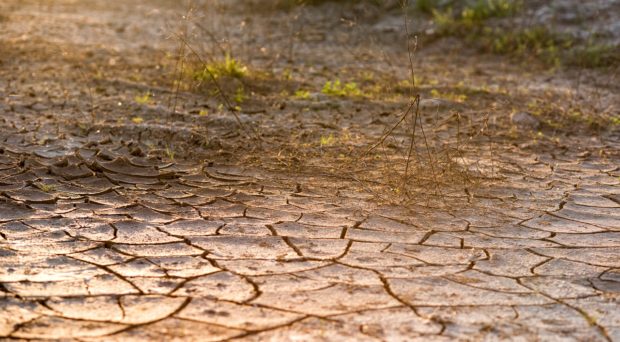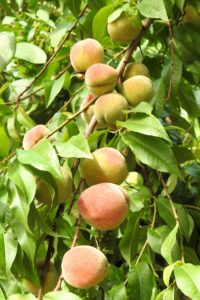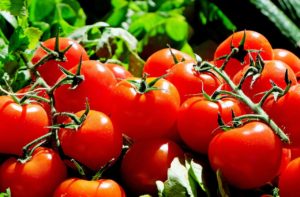
Earth day is celebrated every year on April 22nd with a number of events held worldwide to support the protection of the environment. This year, the campaign focuses on Environmental and Climate Literacy, with the aim of building a global understanding on climate change and the threat it poses to the planet.
One important aspect of climate change is drought. As the temperature of the earth continues to rise, some areas will see more rainfall, but others will see considerably less, causing drought conditions. It has been estimated that, by the end of the 21st century, the areas in the world affected by drought will have doubled compared to today.
Plants are constantly being exposed to many kinds of environmental challenges, one of the main ones of course being drought. A lack of water can seriously affect a plants growth and development, a particularly important consideration for food crops as it is likely to have a detrimental effect on crop quality and eventual yield.
It is therefore vital to investigate how plants respond to drought conditions and look at ways to improve a plants tolerance to a shortage of water.
BMC Plant Biology receives an increasing number of articles that describe studies investigating plant tolerance in plants, and particularly plants that are important food crops. In order to celebrate Earth Day, I thought I would highlight two of my favorites.
How wild peaches cope with drought

Amygdalus Mira (Koehne) Yü et Lu is a type of wild peach. It is considered an ideal germplasm (essentially, a supply of living plant tissue from which new plants can be grown) for improving cultivated peach plants. Due to a lack of genetic variation, cultivated peach plants are vulnerable to environmental stresses, including drought. Cao et al recently published the results of a study looking into how wild peach respond to a shortage of water. Wild peach plants were split into one of two groups; one group was then exposed to drought-like conditions for 16 days while the other group were watered well. Perhaps not surprisingly, the researchers observed that root length and water content were reduced for those plants that had been exposed to in drought-like conditions. They also found that relative conductivity, proline, malondialdehyde and hydrogen peroxide levels had increased, as had the activity of ROS scavenging enzymes. Furthermore, only proline levels returned to normal after the plants were re-watered after the 16 day period. There were also changes in the expression of 95 different proteins in the drought-exposed wild peach plants when compared with well-watered plants, including those involved in cytoskeleton dynamics, carbohydrate, nitrogen and energy metabolism, transcription and translation, transport, stress and defence. The researchers concluded that the interaction between enzymatic and non-enzymatic antioxidants, increased proline, malondialdehyde and hydrogen peroxide levels, increase in relative conductivity, and changes in the levels of proteins expressed all help to make wild peach plants resistant to the effects of drought.
How tomatoes cope with drought

Tomatoes have another trick up their sleeve when it comes to surviving drought. A recent article by Tamburino and colleagues looked at how the chloroplasts present in tomatoes may have an important role in protecting these plants during times of water shortage, by investigating how three-week-old tomato (cv Crovarese) seedlings respond to a lack of water followed by its reintroduction (the “rewatering cycle”). Similar to the response of wild peach plants, the researchers found that a lack of water restricted the growth of the tomato plants and led to increased levels of proline, abscisic acid (ABA) and late embryogenesis abundant gene transcript. Again, very much like the wild peach plant, the expression of a number of proteins in the chloroplast protein repertoire were also affected by drought-like conditions. Once the rewatering cycle began, there was evidence of a general recovery of tomato plant function, but the chloroplast protein repertoire remained affected. Changes in gene expression of some candidate genes and a rise in abscisic acid levels suggest that a specific chloroplast-to-nucleus (retrograde) signaling pathway becomes activated, leading ultimately to a stress response that help the tomato plant cope with drought conditions.
Can research hold the answer to the problem of food shortages caused by drought?
So, what conclusions, tentative or otherwise, can be made so far? Reports that climate change will result in an increase in world hunger over the next few decades highlights the importance of developing crops that can provide high yields even in drought conditions.
The research by Cao et al suggests that reintroducing some of the genetic variation present in wild peach plants to cultivated peach plants, may well also reintroduce some drought-resistant mechanisms to the crop, increasing the tolerance to drought and increasing the amount of fruit produced. And Tamburino et al conclude that ad hoc designed plant mutants could be used to further investigate the retrograde signalling pathway thought to be responsible for drought tolerance in Crovarese tomatoes.
Research into how to make food crops more drought resistant is undoubtedly a very active area of research and it is hoped that it will provide solutions to what could become a serious worldwide concern.
Comments